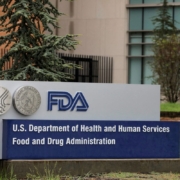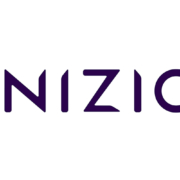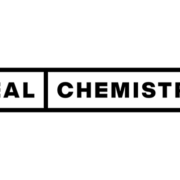Opinion: is the biotech winter beginning to thaw?
Opinion: is the biotech winter beginning to thaw?
Published: Aug 02, 2023
By Lindsay A. Rosenwald
BioSpace
Biotech has been in the worst extended bear market that I’ve seen the industry endure.
The market has been so harsh that, in 2022, BioSpace created a layoff tracker, capturing cuts by dozens of companies that year. The downward spiral (and the tracker) has continued into 2023, with many good companies laying off employees and shuttering promising clinical programs as they’ve tried to keep the lights on until the dark times are behind us and they again have access to capital. In the midst of such hardships, few companies have chosen to go public.
This is quite a steep decline from early 2021. According to McKinsey, between 2019 and 2020, biotech saw double-digit annual growth in fundraising from VCs and deals such as partnerships, co-developments and joint ventures. During the early days of the COVID-19 pandemic, our industry demonstrated its indispensability and investors were rewarded. The average share price for biotechs increased at more than twice the rate of the S&P 500 between January 2020 and January 2021. In 2021, a jaw-dropping 152 companies had IPOs with more than $25 billion raised.
At Fortress Biotech, where I am chairman, president and CEO, our business model is designed to withstand market volatility through a diversified pipeline of revenue-generating pharmaceutical products and development-stage product candidates. So we simply held the course during this tumultous time, but it has nevertheless been interesting to watch the sector try to stabilize and rebound.
So, What Happened?
Several factors contributed to the downturn. The success of our industry in fighting the COVID-19 pandemic created what many thought was a large number of overvalued companies and investor enthusiasm, which in turn enabled a number of companies to get funding and go public that in retrospect either were not far enough along or had product candidates that were not based upon solid and adequately derisked science.
The sheer volume of 2021 IPOs overwhelmingly and largely consisted of companies going public at much earlier stages in development—early clinical or in many cases preclinical—than has historically been the case. Obviously, the failure rate of companies in these stages is much higher than for those further along in the development process. Earlier-stage companies typically have fewer and less meaningful value inflection milestones, creating a fundraising challenge for these companies as the market took a downward turn. Additionally, per Nasdaq, other factors, including the change in federal administration, the shakiness of the economy and inflation all helped to turn that investor enthusiasm into caution.
In 2021, the S&P Biotechnology Select Industry Index declined 18.2% compared to 2020, while the total return of the S&P 500 Index increased by 29.4%. Biotech was the worst performing of any of the 11 S&P 500 sectors for the year. In 2022, the already burned biotech market took another hit, when over 20% of the Nasdaq Biotech Index’s 370 companies were trading for less than cash, leaving these companies, which had a combined estimated $20 billion in cash, worth just $11 billion.
Just as some were starting to feel optimistic that the clouds were beginning to part at the beginning of 2023, the market faced the crash of Silicon Valley Bank (SVB), the primary bank for startup biotechs and the VCs that back them. The crash was ultimately a non-event except for SVP equity holders, but it served to make venture investors even more cautious than they were before the failure.
It is important to note that, despite all the gloom and doom, there have been no material changes to the fundamentals surrounding the biotech industry. Although drug approvals dipped down to 37 in 2022 from 55 in 2021, the industry appears to be back on pace with 26 approvals in the first half of 2023. While the pandemic dropped drug development costs, which remain below pre-pandemic levels, they are once again on the rise. In 2022, the cost of taking a drug from discovery through approval was $2.3 billion. And the pricing environment for innovation, particularly in the U.S., remains strong, providing the incentive investors need. For example, people who invested in Moderna five years ago have since doubled their investment several times over.
Where Are We Now?
Despite everything—the large cuts in staff and pipelines and the downturn in IPOs—there appears to be light at the end of the tunnel. Venture capitalists have been cautiously investing in privately held companies. In the first half of July 2023, four privately held companies announced VC-led rounds of more than $70 million or higher.
For publicly traded companies, digging out appears to be a bit slower, but biotech has begun to outperform the overall market. In July, Investor’s Business Daily gave the industry a Relative Strength Rating of 72, putting biotech in the top 28% of all stocks in terms of 12-month performance. And at least some analysts predict that the number of biotech IPOs will increase in the second half of the year. Indeed, after fewer than 10 IPOs in the entire first half, there have already been two announced in the first few weeks of the second half: Apogee and Sagimet.
How Do We Push Forward?
The key to a full rebound in the publicly traded sector will be a change in sentiment and a true reopening of the IPO window, which is essential for VCs to see realistic potential for meaningful exits and feel confident investing large sums. While the pandemic fueled a large amount of interest, the market’s recent erratic behavior will force investors to evaluate companies more carefully—by underlying fundamentals, business model and long-term potential.
While risks are ever-present, investing in biotech now has greater potential for significant reward than at any time I can remember. With many public biotech companies trading below cash, the possibility for significant returns in the long term is incredibly strong—in essence, lots of great science is now on sale. As history has shown, biotech stocks show resilience during economic downturns. During the Great Recession, the SPDR S&P Biotech ETF beat the market both during and immediately after the recession.
What Should Investors Look For?
Investors brave enough to weather the current storm should look for biotech companies that have assets in clinical development, in particular, those with positive data from Phase II or III trials. Such candidates have been largely de-risked, with a stronger likelihood of approval. As FT Adviser notes, “the average probability of success (to approval) is about 10 percent at Phase I; around 20 percent at Phase II; and around 50 percent at Phase III–however, there are marked differences in each therapeutic area.” This is why our business model at Fortress Biotech focuses on acquiring and advancing clinical assets that have already yielded promising human data.
Thus, while the industry may still be in a slump compared with its heyday during the pandemic, the time is now ripe to invest in biopharma. As I often like to say, “Good things may come to those who wait, but only the things left by those who hustle.” Smart investors who ride this wave will likely reap the benefits in the future.
Source: BioSpace



 Reuters
Reuters





